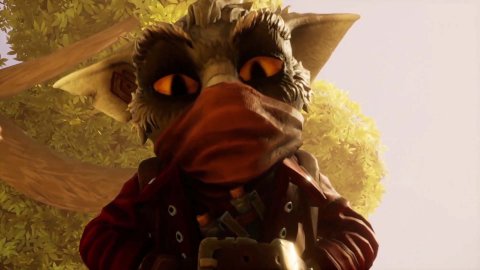Stray Blade, the interview with game director Leonard Kausch introduces this peculiar action RPG

Stray Blade
Of the games presented during the Xbox Showcase in August, Stray Blade is among those that most left its mark: the action RPG developed by the Berlin studio Point Blank Games seems to have all the credentials to offer a different experience than usual, although built around such known bases. We interviewed Leonard Kausch, game director of Stray Blade and CEO of the development studio, to find out some more details on the Acrea valley, on the mysterious adventurer and his companion Boji but, above all, on some of the most particular and promising game mechanics. .In case you want to find out more about the game, we recommend you to read the preview of Stray Blade.
The genesis of Stray Blade
Stray Blade , the fight promises to be merciless Can you tell us about Point Blank Games? When did you start working on Stray Blade and how many people are involved in the development? (on the site we see a dozen)We started working on Stray Blade four years ago. At the time we were five people in a very small office. At some point, we decided to develop a game that would be distinctive for the team. The Stray Blade design has been carefully built around the strengths of each of us and with a shared vision supported unanimously. We pushed the game forward and when 505 Games got involved in the project, development benefited a lot. Currently, Point Blank Games is a team of twenty-four people all focused on Stray Blade.
In the first developer diary you talked about how the environment changes over time and based on the player's actions. Can you give us an example or two to make us understand better?
Stray Blade is set in a wild and dangerous place, invaded by three warring factions as the player begins his adventure. Having Boji as a guide, the player is often the first to open hidden passages that have remained sealed for a long time: inside them, he must then fight his way through the hostile creatures that inhabit the ruins. Once the area is cleared and made accessible to anyone, the opportunity arises for a human faction to make it their own and build an outpost there - which, in turn, will hinder the player's path in the future. This creates a new game experience now they are in the player's path when he returns from other explorations to revisit this area. This will create a new gaming experience, should he retrace his steps, because he will remember those places but at the same time they will not be as he remembered them.
Sources of inspiration
Stray Blade, the Acrea Valley hides as many secrets as its dangers. The combat seems close and strategic but not merciless. Were you inspired by any particular action games?During the first ever game design session, we had Shadow of Mordor on one side and Dark Souls on the other: we placed Stray Blade halfway between the two and this was our starting point . Since then, the game has developed its own identity in building an accessible, brutal and vivid combat system, with a strong emphasis on exploration and environmental storytelling.
Can you tell us more about Boji? What is his relationship with the Adventurer and how does he collaborate with him?
I don't want to spoil Boji's origins too much because that would be a shame. But I can tell you that he is one with Acrea, having proclaimed himself (not literally) the patron saint of that place. He knows the valley very well which makes him the perfect guide. The Adventurer is the key to restoring peace to Acrea, which is why Boji has decided to become her companion, regardless of the Adventurer's opinion about it. The latter is used to operating alone and has difficulty being part of a duo. Nonetheless, their goals align to form an interesting relationship, split between friction and cooperation.
You allowed some players to participate in a playtest session of the game last year. How is Stray Blade shaping and evolving in relation to the feedback and suggestions received from players?
The play sessions were a great help in putting our ideas to the test. Watching gamers experience streaming Stray Blade on Discord was also very informative. Often, seeing someone play provides more detailed information than bombarding them with questions. For example, we have received very positive feedback about the ever-changing world, which was still in a prototype stage at the time, and such feedback helps us understand where to invest most of our time.
Have you noticed any errors?